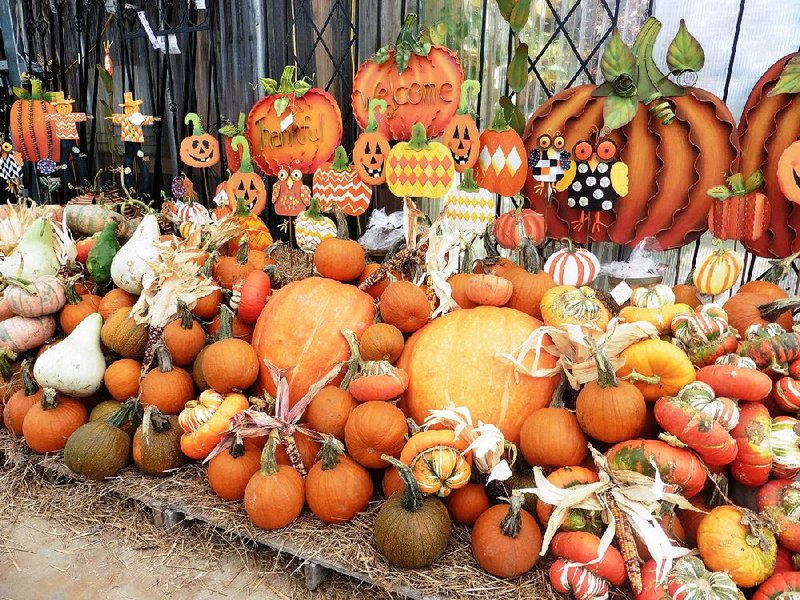OCTOBER
We are transitioning from one growing season to the next, so there is plenty of work to do in the garden, from raking and planting to harvesting and cleanup.
• We usually get more moisture in October, but monitor your plants' water needs.
• Not all plants wait for a killing frost to end their season. Some annuals and perennials are dying back, so cleanup is in order.
• If you have spring- or summer-blooming perennials, now is a great time to dig and divide them. Try to have two to three crowns per division. Replant, water and mulch, and they should be happy and thriving plants next spring.
• As your summer annuals play out, start replacing with winter color. Cool plants from pansies and violas to snapdragons, Swiss chard, beets, kale and cabbage (edible and ornamental) are available. If your summer annuals are still growing, intersperse some cool-season plants among them so they have time to get established before the temperatures drop.
• Vegetable gardens are still producing nicely and new starts are still available to plant. In mild winters, many of the cool-season vegetables will grow undaunted without protection. If temperatures below 29 are predicted, you will need to add a little covering to get them through, but we can now grow these vegetables year-round. Winter vegetables also have very few insect or disease problems. So if you have not thought about growing a winter garden, think again. Broccoli, cabbage, kale, Swiss chard, beets, carrots and turnips all do well. Don't forget about watering needs, and mulching will help manage moisture, temperature and weeds.
• Houseplants and tropical plants that you plan to overwinter indoors need to be moved soon. Moving them when inside and outside conditions are similar will be less stressful on the plants. As a general rule, your plants should be inside before your heater turns on for the first time. Prepare houseplants for the move by checking them for insects first. Lower light, less humidity and static temperatures can be hard on tropical plants indoors, so help them by grouping them together to increase humidity, and let them dry out between watering. Give them bright light and less water and they should be OK; but don't be alarmed if you see some leaf shed.
• Ornamental grasses are at their peak. Plants come in a variety of sizes with various colored seed heads. Even though the grasses die back with a killing frost, you want to enjoy their plumage all winter. Cut them back in late February before new growth begins.
PUMPKIN
For instant color in the garden, look to the wealth of pumpkins and gourds. There are all sizes and colors available. Choose a blemish-free fruit with a stem attached, and it can last for months. To add to the mix, throw in some corn stalks, mums and asters, and you have quite a show.
Few things symbolize fall better than the pumpkin and it doesn't need to be orange. Options include orange, white, red, green and striped; smooth rinds to warty; all sizes.
While pumpkins aren't difficult to grow, they do require a long time to mature and a large area to grow in. Many gardeners choose to let someone else grow the plants and simply buy some each fall.
Pumpkins are members of the cucurbit family, which means they are kissing cousins of cucumbers, squash, watermelons and gourds. They are normally planted once the soil warms up in June or early July, which will have them ready for a fall harvest.
Sizes range from the tiny "Jack-b-little," which produce a softball-size fruit, up to the giant award winners like "Big Max" and "Prize Winner," which can produce fruits weighing more than 100 pounds. Supposedly the world record is more than 1,800 pounds.
These giant fruits aren't that attractive, but they do win ribbons.
Pie pumpkins are traditionally smaller fruited forms, usually 3 to 6 pounds.
Pumpkins are low in calories, fat and sodium and high in fiber. They are good sources of Vitamin A, Vitamin B, potassium, protein and iron. You can even cook a stew or soup inside a hollowed-out pumpkin and roast it in the oven. The flowers also are edible.
Some people paint them silver or gold to extend their usefulness. Another way to extend their life is to clean them and spray on a clear sealer.
Janet B. Carson is a horticulture specialist for the University of Arkansas Cooperative Extension Service.
HomeStyle on 10/01/2016
